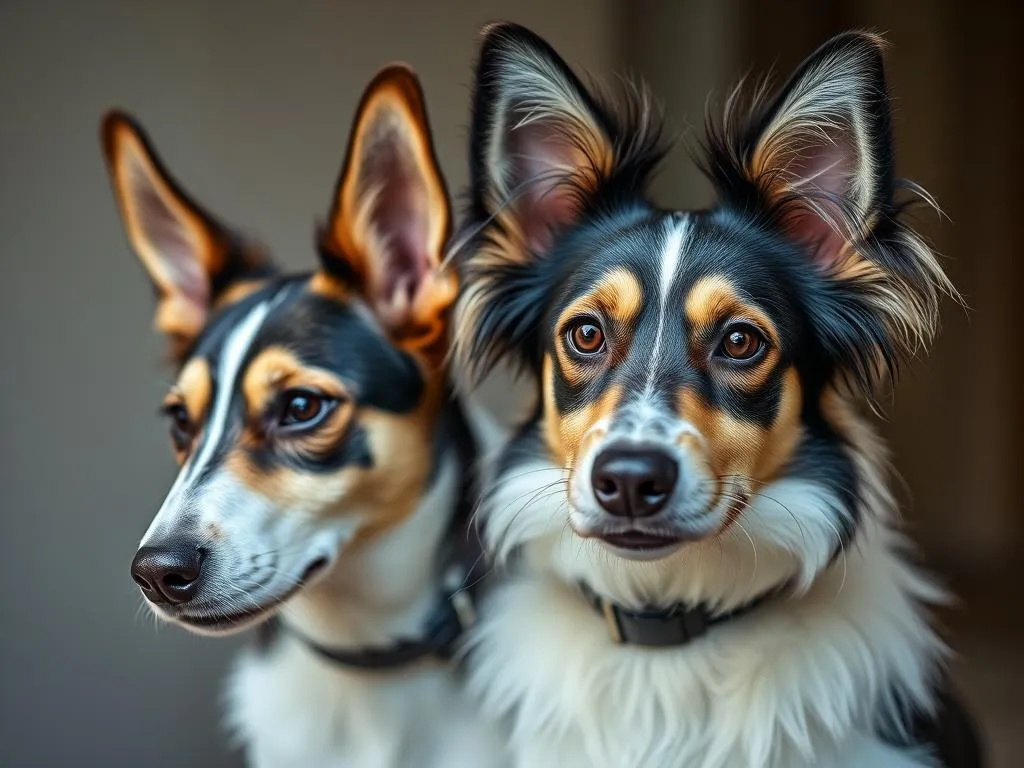
Introduction
Dogs have been our loyal companions for thousands of years, and their diverse breeds offer a variety of traits that appeal to different owners. One fascinating aspect of dog breeds is their physical characteristics, particularly ear shapes and lengths. Among the numerous breeds, dog breeds with long ears stand out for their unique appearance and functionality. Understanding these breeds is essential for potential dog owners, as it aids in selecting a breed that matches their lifestyle and preferences.
In this comprehensive guide, we will explore the specifics of dog breeds with long ears, highlighting their characteristics, care needs, and the joys they bring to families.
What Makes a Dog Breed Have Long Ears?
Long ears in dogs are typically defined as ears that hang down rather than standing erect. These elongated appendages can range from moderately long to exceptionally lengthy, depending on the breed. Several genetic factors contribute to ear length; certain breeds have been selectively bred for specific traits, including ear shape and size.
The purpose of long ears varies across breeds. For instance, in hunting breeds, long ears can enhance scent detection, allowing the dog to pick up on scents closer to the ground. Additionally, long ears can serve as a means of communication, helping convey emotions and intentions.
In summary, the presence of long ears not only contributes to a breed’s appearance but also plays a vital role in their functionality, especially in hunting and tracking scenarios.
Popular Dog Breeds with Long Ears
Basset Hound
The Basset Hound is one of the most recognizable breeds with long ears. With their distinctive droopy ears and short legs, these dogs have a unique appearance that endears them to many.
Physical Characteristics: Basset Hounds have ears that can reach lengths of up to 12 inches, which hang down alongside their broad, expressive faces. Their body structure is low to the ground, making them excellent scent trackers.
Temperament: Known for their laid-back demeanor, Basset Hounds are affectionate and gentle, making them great family pets. They require moderate exercise, but their stubborn nature can make training a challenge.
Bloodhound
The Bloodhound is famed for its exceptional sense of smell and tracking abilities. Their long, droopy ears are part of what makes them such effective scent hounds.
Unique Traits: The ears of a Bloodhound are not just for show; they help in collecting scent particles as the dog tracks. This breed is known for its remarkable tracking ability, often used in search and rescue missions.
Training Needs: Bloodhounds require consistent training and socialization due to their independent nature. They need ample exercise to keep them stimulated and avoid boredom.
Coonhound
Coonhounds are another breed with long ears, known for their agility and keen nose.
Characteristics: These dogs are athletic and built for endurance, with ears that hang low to help them pick up scents while on the trail.
Personality Traits: Coonhounds are friendly and sociable, often getting along well with children and other pets. However, they can be vocal and require regular exercise to keep them happy.
Beagle
The Beagle is a small to medium-sized breed with long ears that are critical for its hunting prowess.
Description and History: Originally bred for hunting rabbits and other small game, Beagles have a keen sense of smell, which is enhanced by their long, floppy ears.
Family Suitability: Beagles are known for their friendly and curious nature, making them excellent family pets. They thrive on companionship and require regular exercise to prevent boredom.
Dachshund
The Dachshund, often recognized by its elongated body and short legs, also has long ears that contribute to its charming appearance.
Overview: These dogs were originally bred for hunting badgers, and their long ears help them detect scents while burrowing.
Adaptability: Dachshunds are lively and intelligent, requiring mental stimulation and physical activity. They tend to bond closely with their families and can adapt to various living situations.
Irish Setter
The Irish Setter is a striking breed known for its beautiful red coat and long ears.
Characteristics: Besides their aesthetic appeal, long ears are functional, assisting in their hunting capabilities by aiding in scent detection.
Activity Level: Irish Setters are high-energy dogs that require plenty of exercise and mental stimulation. Their friendly and outgoing nature makes them great companions for active families.
Cocker Spaniel
The Cocker Spaniel is a beloved breed with long, flowing ears that are iconic to its appearance.
Overview: Known for their friendly and gentle demeanor, Cocker Spaniels are excellent family pets. Their long ears not only contribute to their beauty but also play a role in their ability to track scents.
Health Considerations: Regular grooming and care are essential to maintain their ear health, as their long ears can be susceptible to infections.
Care and Maintenance for Dogs with Long Ears
Proper care is essential for maintaining the health of dog breeds with long ears. Long ears can trap moisture and debris, making them prone to infections.
Importance of Ear Hygiene
Regular ear cleaning and inspection are crucial for preventing ear infections. Owners should check their dog’s ears weekly for signs of redness, swelling, or discharge.
Tips for Cleaning and Maintaining Ear Health
- Use a gentle ear cleaner: Look for products specifically designed for dogs.
- Avoid using cotton swabs: These can push debris further into the ear canal.
- Clean only the outer ear: Do not insert anything into the ear canal.
Common Ear Problems and Prevention
Long-eared breeds are prone to several ear issues, including infections, mites, and wax buildup. Regular veterinary check-ups and maintaining a clean environment can help prevent these problems.
Training and Socialization
Training and socialization are vital for all dogs, especially dog breeds with long ears.
Overview of Training Challenges and Strengths
Long-eared breeds can exhibit varying levels of stubbornness, making training a challenge. However, many are intelligent and eager to please, which can aid in the training process.
Importance of Early Socialization
Socializing dogs from an early age helps them develop into well-adjusted adults. Exposing them to various environments, people, and other animals can mitigate behavioral issues later in life.
Recommended Training Techniques
- Positive reinforcement: Reward-based training is often the most effective approach.
- Consistency: Establishing clear commands and routines can help dogs learn faster.
- Short sessions: Keeping training sessions brief and engaging can maintain your dog’s attention.
Health Considerations
While dog breeds with long ears are generally healthy, they can be prone to specific health issues.
Common Health Issues
- Ear infections: As previously mentioned, these are common due to the structure of their ears.
- Hip dysplasia: Some breeds may be susceptible to this genetic condition.
- Obesity: Many long-eared breeds are less active, leading to weight gain if not monitored.
Importance of Regular Veterinary Check-ups
Routine vet visits are essential for early detection and prevention of health issues. Regular vaccinations, parasite control, and dental care should also be part of their health maintenance.
Preventative Measures for Health Maintenance
Maintaining a balanced diet, providing ample exercise, and ensuring proper grooming can significantly contribute to the overall health of dogs with long ears.
Conclusion
In conclusion, dog breeds with long ears offer a unique blend of beauty, functionality, and companionship. Understanding the characteristics of these breeds, their care needs, and health considerations is crucial for potential owners. By choosing the right breed based on these factors and committing to responsible pet ownership, you can ensure a fulfilling relationship with your canine companion.
As you embark on your journey to find the perfect dog, consider the traits and needs of long-eared breeds to make an informed decision that benefits both you and your future pet.
FAQs
What are some dog breeds with long ears?
Common breeds include Basset Hound, Bloodhound, Coonhound, Beagle, Dachshund, Irish Setter, and Cocker Spaniel.
How do I care for my dog’s ears?
Regular cleaning, inspection, and ensuring they stay dry are essential to prevent infections.
Are long-eared breeds good with children?
Many long-eared breeds, such as Beagles and Cocker Spaniels, are known for their friendly nature and generally get along well with children.
What training methods work best for long-eared dogs?
Positive reinforcement and consistency in training are effective methods for teaching these breeds.
How often should I take my long-eared dog to the vet?
Regular check-ups every six months are recommended, along with annual vaccinations and dental care.
By understanding the unique characteristics and care requirements of dog breeds with long ears, you can make a well-informed choice that leads to a happy and healthy life for both you and your furry friend.









